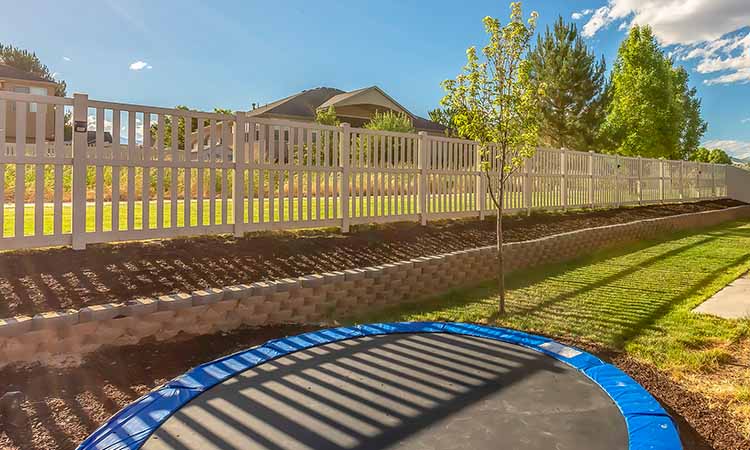Autism: Protecting Children

The Benefits of Residential Fencing for Children with Autism: Enhancing Security and Peace of Mind for Families
For families with children on the autism spectrum, creating a safe and supportive home environment is of paramount importance. Among the many considerations for ensuring a child’s well-being, one often overlooked yet incredibly effective solution is residential fencing. Whether it’s a traditional wooden fence, a modern vinyl option, or a secure metal barrier, fencing offers numerous benefits to families with autistic children. It provides not only physical security but also emotional peace of mind for both parents and children. In this article, we’ll explore the various ways residential fencing can enhance safety, reduce anxiety, and promote a greater sense of independence for children with autism.
1. Safety and Security: Minimizing the Risk of Wandering
A common challenge for many children with autism is a tendency to wander or elope, often without any apparent warning. This behavior can be dangerous, especially in busy neighborhoods or near busy roads. Residential fencing provides an essential layer of protection by creating a defined, secure boundary around the home. It helps prevent children from wandering out of the yard or into potentially hazardous situations, such as busy streets, unfamiliar areas, or bodies of water.
For families with non-verbal or impulsive children, this added security is invaluable. Parents can have greater peace of mind knowing their child is confined to a secure area, and the child is less likely to leave the premises unsupervised. Fencing offers a clear physical boundary that children can understand and respect, which is often especially important for children with autism, who may struggle with understanding abstract concepts like rules or instructions.
2. Creating a Sensory-Friendly Environment
Many children with autism have heightened sensory sensitivities, and the outside world can often be overwhelming. A residential fence can help create a sensory-friendly space by reducing external distractions and providing a calming environment. For example, high fences can shield children from the sights and sounds of traffic, neighbors, or other environmental stimuli that may cause stress or anxiety.
Fencing can also help define a private outdoor area where children can engage in calming activities like playing in a safe, enclosed yard. It offers a controlled space where children can explore and engage with nature, without the risks associated with wandering or the overwhelming sensory overload of busy, public spaces.
3. Providing Structure and Predictability
Children with autism often thrive in environments where routines and structures are predictable. A fenced yard offers a consistent and stable space for play, which can contribute to a child’s sense of security. The boundary provided by the fence can create a reliable space where children can engage in activities like playing with toys, running around, or simply enjoying time outdoors.
The enclosure can also help children understand spatial boundaries, which is an important developmental milestone. Knowing where they can and cannot go gives children a sense of control and helps them develop important cognitive and motor skills, such as spatial awareness and coordination.
4. Encouraging Independence and Outdoor Play
For many children on the autism spectrum, outdoor play is a critical part of their development. A fenced yard offers a safe, private area where children can play and explore without the constant supervision required in public spaces. This increased autonomy can foster a sense of independence and allow children to develop social, physical, and cognitive skills at their own pace.
Fencing can also make it easier for families to integrate outdoor therapy and physical activities into their child’s routine. Whether it’s a sensory swing, a trampoline, or a play structure, a secure fenced area offers the freedom for children to engage in activities that help them with sensory regulation, motor development, and social interaction.
5. Reducing Stress for Parents and Caregivers
Parents of children with autism often experience heightened stress levels due to the constant need for vigilance and supervision. Residential fencing can alleviate some of this pressure by providing a reliable boundary. Parents can feel more confident allowing their children to play or relax outside, knowing that they are safe within the confines of their fenced yard.
The mental and emotional benefits of knowing your child is secure cannot be overstated. It allows parents to take a step back, even if just for a moment, and gives them the ability to focus on other tasks or simply enjoy a bit of downtime, knowing their child is safe and contained.
6. Promoting Socialization and Interaction
A fenced yard can also serve as a space for supervised social interaction, which is important for children with autism who may have challenges with socializing in more public settings. Whether it’s spending time with siblings, neighbors, or friends, a safe, enclosed space provides opportunities for social play, which is essential for developing social skills.
In addition, residential fencing can make it easier to host playdates or social events, as parents can focus on facilitating positive social interactions without worrying about the safety of their child or other children.
7. Customizable Options to Suit Your Child’s Needs
Residential fences are available in a variety of materials, styles, and heights, allowing families to choose the best option based on their child’s specific needs. For example, some children may benefit from a higher, more secure fence that minimizes the risk of climbing or escaping. Others may require a more aesthetically pleasing or visually open design to avoid feelings of confinement.
Fencing can also be tailored to accommodate other features, such as gates with secure locks, soft padding, or sensory-friendly designs. Families can work with fencing contractors to ensure that the fence meets both the security and sensory needs of their child, providing the optimal balance of safety and comfort.
Conclusion: The Peace of Mind You Deserve
Residential fencing is an often overlooked yet crucial tool in supporting families with children on the autism spectrum. The physical security it offers, along with the emotional benefits of knowing your child is safe and contained, provides immeasurable peace of mind for parents and caregivers. By reducing the risk of wandering, creating a sensory-friendly space, and offering opportunities for independence and socialization, fencing can help children with autism thrive in a secure, supportive environment.
Investing in residential fencing is more than just a home improvement—it’s a step toward a safer, more nurturing environment that supports the unique needs of families with autistic children. With the right fencing solution, you can help your child enjoy the freedom to explore and play, while ensuring their safety and well-being.
